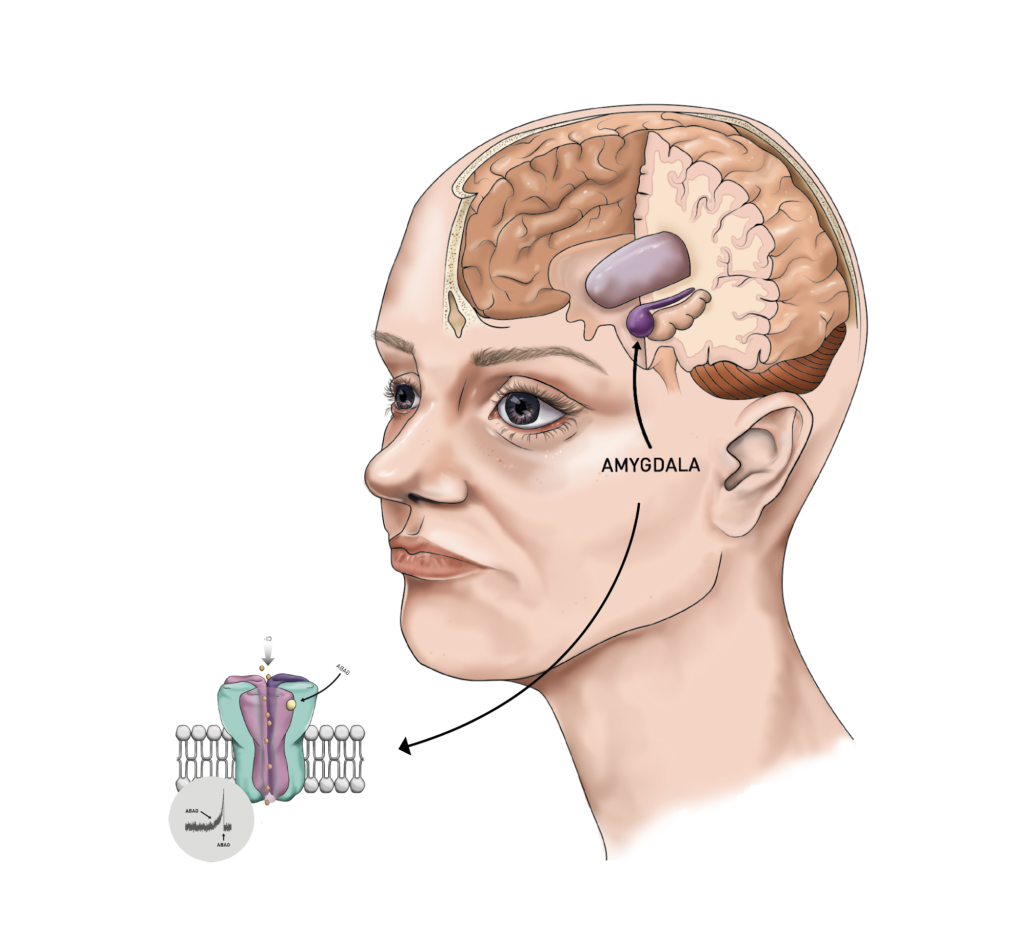ALLO AND GABA
THE BRAIN’s ‘BRAKE’ SYSTEM
So, what does it mean neurologically, to remain “in control”? Although our lives and feelings change constantly, sometimes even dramatically, when it happens most of us still feel that fundamentally we remain “in control” of our deepest emotions, impulses and compulsions. GABA, the brain’s most powerful inhibitory neurotransmitter, is a crucial part of that. For most of us GABA, and the neurosteroid Allopregnanolone that interacts with it, reduces stress, fear and anxiety levels—helping us remain firmly in control of our lives. But for others, there is an altogether different effect.

AMYGDALA. The amygdala plays a crucial role in processing emotional responses. Inside the amygdala, neurons use the neurotransmitter GABA (gamma-aminobutyric acid) to modulate feelings such as fear, anxiety and aggression. The GABA system is the brain’s primary inhibitory neurotransmitter.
THE ALLO PARADOX
The neurosteroid Allopregnanolone (ALLO) modulates GABA, acting on the GABA-A receptor, the chloride channel in the brain that is the major channel for GABA. For most of us ALLO plays an important role in helping GABA reduce our stress, fear and anxiety levels. For a significant minority of us though, ALLO has the exact opposite effect, and for these individuals ALLO is highly disruptive, inducing disorders and negative symptoms.
Instead of calming, sedating or reducing stress, it increases their stress and anxiety levels, producing severe, mood- and personality-altering symptoms or triggering powerful, irresistible compulsions. Increased ALLO levels or a heightened sensitivity to ALLO is implicated in conditions ranging from Tourette to OCD, PTSD, compulsive gambling, addiction—and more.
SEPRANOLONE AND THE GABA-A RECEPTOR
The body’s modulator of these effects is Sepranolone, an endogenous neurosteroid that specifically regulates the negative effects of ALLO. Sepranolone does this by resetting the GABA-A receptors to normal. But ALLO is not the only neurosteroid that acts on our behavior through the GABA-A receptor.
